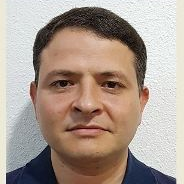New Tools or Trends for Large-Scale Mapping and 3D Modelling
A special issue of Remote Sensing (ISSN 2072-4292). This special issue belongs to the section "Environmental Remote Sensing".
Deadline for manuscript submissions: closed (15 February 2023) | Viewed by 24777
Special Issue Editors
Interests: GIS and mapping; applied remote sensing; spatial analysis; large-scale mapping; 3D GIS; LiDAR mapping
Special Issues, Collections and Topics in MDPI journals
Interests: geomatics; photogrammetry; remote sensing; geostatistics; LiDAR; RPAS; 3D modelling
Special Issues, Collections and Topics in MDPI journals
Interests: remote sensing; Lidar; 3D modelling; classification; segmentation
Special Issues, Collections and Topics in MDPI journals
Special Issue Information
Dear Colleagues,
Topographic surveys are used to capture the shape of the world and represent it as a topographic map or a three-dimensional (3D) model. Large-scale topographic maps are essential for (a) the design and construction of the infrastructure in the urban environment, (b) 3D/city modelling, and (c) general-purpose mapping. Topographic surveys are normally carried out with traditional surveying, photogrammetry, LiDAR/laser scanning, unmanned aerial vehicles (UAVs), and satellite remote sensing. Remote sensing tools have shown their efficacy in exploring the natural, human, and social systems at unprecedented resolutions. These tools have been used for acquiring the spatial data needed for mapping since the early 1970s, because they are rapid, cost-effective, and reliable. Now, the demand for geospatial data has increased exponentially, coupled with the need for high-quality large-scale maps and 3D models. The recent developments in remote sensing cameras have opened the door for the high-quality, large-scale mapping of our environment, 3D/city modelling, as well as many useful applications such as infrastructure monitoring, crack measurement, etc. This includes depth (stereo) cameras, fine-resolution satellite sensors, and state-of-the-art cameras for terrestrial photogrammetric applications.
In this Special Issue, we aim to compile research articles that address various aspects of large-scale mapping and 3D/city modelling with remote sensing cameras from field data acquisition used to map or 3D-model, and their applications. Review contributions and papers describing new sensors/concepts are also welcomed.
Prof. Dr. Tarig Ali
Prof. Dr. Jorge Delgado García
Prof. Dr. Fayez Tarsha Kurdi
Guest Editors
Manuscript Submission Information
Manuscripts should be submitted online at www.mdpi.com by registering and logging in to this website. Once you are registered, click here to go to the submission form. Manuscripts can be submitted until the deadline. All submissions that pass pre-check are peer-reviewed. Accepted papers will be published continuously in the journal (as soon as accepted) and will be listed together on the special issue website. Research articles, review articles as well as short communications are invited. For planned papers, a title and short abstract (about 100 words) can be sent to the Editorial Office for announcement on this website.
Submitted manuscripts should not have been published previously, nor be under consideration for publication elsewhere (except conference proceedings papers). All manuscripts are thoroughly refereed through a single-blind peer-review process. A guide for authors and other relevant information for submission of manuscripts is available on the Instructions for Authors page. Remote Sensing is an international peer-reviewed open access semimonthly journal published by MDPI.
Please visit the Instructions for Authors page before submitting a manuscript. The Article Processing Charge (APC) for publication in this open access journal is 2700 CHF (Swiss Francs). Submitted papers should be well formatted and use good English. Authors may use MDPI's English editing service prior to publication or during author revisions.
Keywords
- topographic mapping
- cameras
- 3D and city modelling
- UAVs
- mapping/3D modelling







